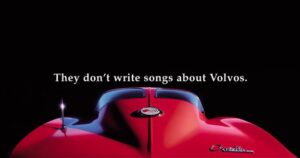Write Less, Sell More: The Non-Writers’ Guide to Concise Copy
6 Easy Copy Tips for Marketing Your Business
Marketers—we’re not all writers, right? Yet we do what we must to get the job done. So, this is for every non-writer who’s ever been asked to stretch their skills to get that campaign out the door.
You’ve heard it a zillion times: effective copy gets to the point. But if you don’t write daily, crafting strategic sentences can feel daunting. Here are a few tips to make your writing…less.
Respect the Process
Professional copywriters have a process. Always.
Because when you have a plan, blank pages don’t scare you. So before writing a word, map out a route to victory:
- Define your audience – Do you speak the same way to your grandmother as you do your best friend or your boss? Probably not. When you can imagine your ideal customer and use language that appeals to them, you can create great copy.
- Define your goals – Every marketing task should have a clear objective (beyond attracting new customers). Do you want people to visit your website, or do you want more bodies through your storefront? Maybe you need seasonal products off shelves to make room for new inventory. Whatever the goal, mark it with a bullseye. Because every line of copy should point to it.
- Write freely – Once you know what you want and who to ask, the work can begin. To start, don’t worry about rules. Just write. All words are welcome at this stage, so don’t overthink every line. You’ll worry about the details later.
- Revise – During this last stage, you’ll analyze every sentence and ask yourself, “What does this sentence say/do? How many words can we take out while leaving its meaning the same?”
Ditch the Extras
You may have heard that excellent copy stays conversational. And that’s true. Except when it isn’t.
Because we use soooo many words when we speak. Instead, try to use simple, casual words instead of fancy, I’m super smart and important ones.
During the editing phase, your main goal is to ditch as many extra words as possible—needless muck that adds no meaning or value. This doesn’t mean writing in a clipped or cold way, but every word should carry its weight. Here are repeat offenders to watch out for (not an exhaustive list):
That – Sometimes it works, but often it doesn’t. We use it conversationally to make words flow, but many people overuse it in their writing.
As well as – Come on, folks. Just say and.
In order to – You write in order to sell.
End result – Aren’t all results ends?
A total of – Write the number. That is all.
In the event that – If
Specific/particular/certain – Cut ‘em.
The fact that – Because
Really/very – You love them, but do they really add anything?
Literally – Just stop. Please.
Another quick tip – look out for adjectives. Sometimes a solid descriptor can emphasize your message but use too many and copy looks fluffy.
Start with the Ending
Unlike an edge-of-your-seat thriller that saves the twist for last, copy needs to get there…yesterday.
Sometimes that means opening with the result, or what customers get from your product/service, before plugging your business. Consider these examples:
Relax knowing your yard always looks amazing. Call Joe Shmo Lawncare today.
Get healthy. Feel happy. Join ABC Fitness today.
Make food they’ll eat. Sign up for XYZ Meals today.
Edit Out Loud
Reading (to edit) in your head has drawbacks.
First, we speak more than we read, so our ears pick up on errors or funny-sounding phrases more quickly than our eyes.
Also, did you know your brain can autocorrect mistakes? Tricky gadgets, brains…wired to anticipate. That’s why yuo can read tihs.
The trait comes in handy, sure, but it can backfire sometimes. When reading text you wrote, you know what’s coming up. So, a missing word in a sentence might go unnoticed. Read that same sentence out loud, and you’ll hear the omission.
Reading aloud also helps with:
- Grammar: you’ll hear natural pauses and know where to put punctuation.
- Holes: when writing, it’s easy to leave out obvious information, assuming the reader knows what you’re trying to say. Reading out loud highlights these gaps.
- Repetition: hearing the same word(s) repeatedly is grating, but as you write, you may not realize you favor some words over others.
Learn from the Best
Finally, if you want to improve a skill, watch how the pros do it. The examples below convey big ideas using minimal words.

Mixbook’s headline gets to the point in six words. Six. And the Images aren’t bad, either.

What’s simpler than basic black? This ad by Hiut Denim Company tells us everything we need to know about their jeans.

Corvette deals a low blow with this one, but it works. Is snarky tacky when it’s not wrong? Once you think about it, you realize, can’t think of a single song about Volvos.
…One More Thing
If you want to enjoy the benefits of excellent copywriting without having to create it, Xpressdocs offers suggested copy ideas on many of its templates, along with impressive images and designs. Because sometimes even the brightest marketers need a break.